11 Types Of Sunglasses (with Pictures)
Last Updated on
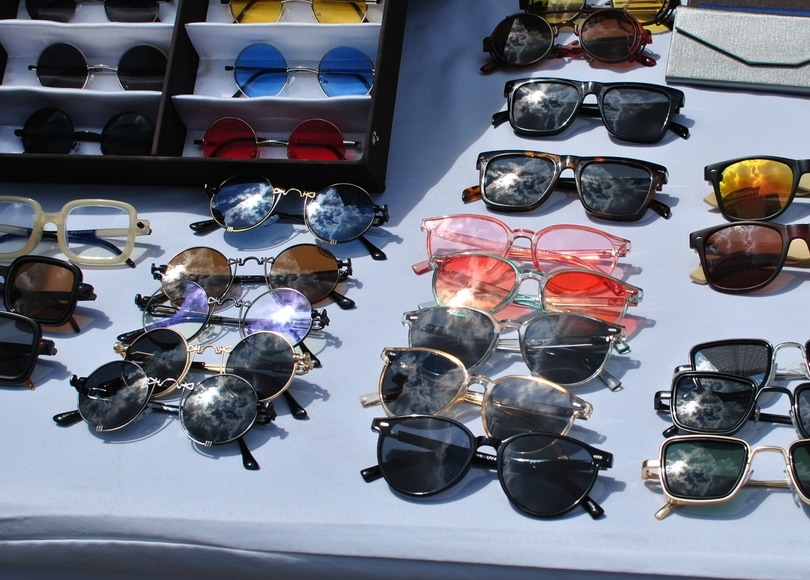
No one can dispute the fact that sunglasses are the ultimate fashion accessory. If your goal has always been to deliver a solid fashion statement, a pair of wayfarers or aviators will definitely make your work a lot easier.
There’s also the other aspect of health. You see, just like the skin, it’s easy to damage your vision if your eyes are exposed to too much sunlight. That’s why we’re often encouraged by specialists to always go for pairs that are specifically designed to shield us against UVA and UVB radiation.1 These forms of energy have the ability to cause serious ophthalmological health complications.
Now that we know what sunglasses actually do for our eyes, let’s move on and learn a thing or two about the different types.

The 11 Types Of Sunglasses (with Pictures)
1. Polarized Sunglasses
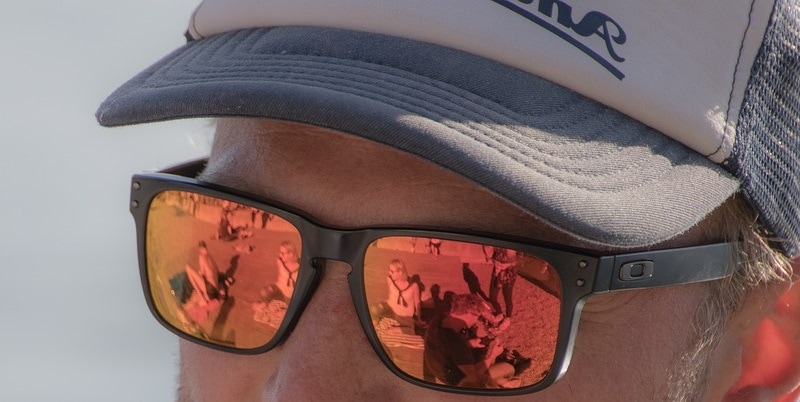
The light being emitted by the sun usually scatters in different directions. But once it strikes a reflective flat surface, the rays become polarized. That’s to say, they all travel in the same direction. The reflected light is often referred to as glare, and according to eye specialists, it can cause eye strain, irritation, and overall discomfort.
That’s where polarized sunglasses come in. They have a special type of lens with an in-built filter to block all that unnecessary light, improving your vision while complementing your style.
2. Photochromic Sunglasses
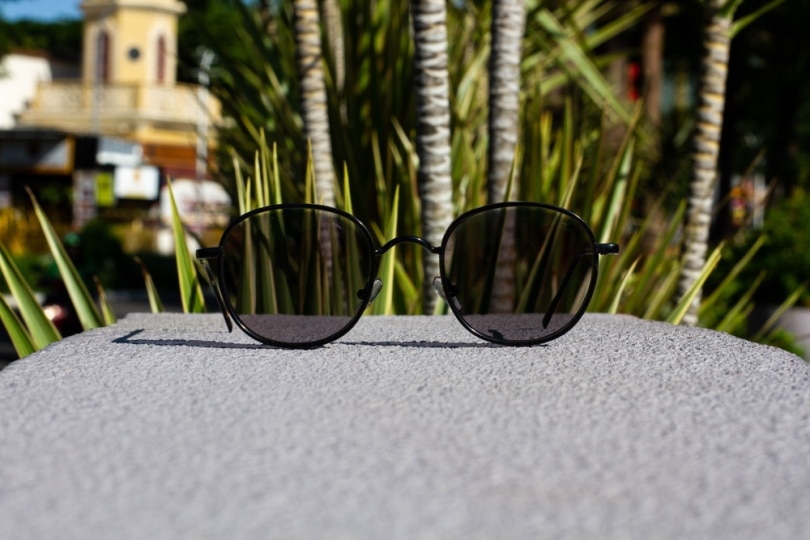
They are just normal sunglasses, except for the fact that they have photochromic lenses. These lenses are made up of molecules that are easily manipulated in the presence of light. If the light is too bright, even if it’s not light from the sun, they’ll right away transform into darker shades—the reason why they are sometimes called ‘transition’ or ‘adaptive’ lenses.
Both the photochromic and polarized sunglasses will be effective at protecting your eyes from glare. But the photochromic lens is the best option in our opinion, seeing as it adapts to the changes in the light intensity.
3. Prescription Sunglasses
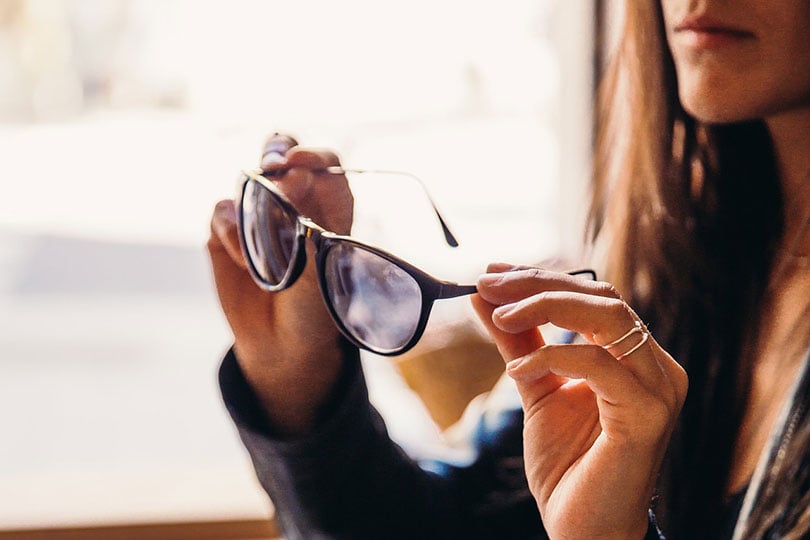
These sunglasses have always been the answer for fashion enthusiasts who’re grappling with astigmatism, myopia, or hyperopia. They’ll correct your vision the same way your prescription glasses do, banish glare, and still give you 100% UV protection.
The good thing about investing in a pair of prescription sunglasses is that you get to choose what type of lens you’d wish to rock. You could request the store to fix in photochromic, polarized, scratch-resistant, or polycarbonate lenses.
4. Retro Sunglasses

“Retro” is just a term used to describe things that relate to the past. So, if you hear someone talk about retro clothing or sunglasses, they are basically referring to the clothes or glasses that used to be considered fashionable back in the day. The oversized sunglasses are the perfect example of retro sunglasses. Their popularity has never dwindled because style doesn’t fade—it’s eternal.
5. Cat-Eye Sunglasses

This design was popular in the 50s and 60s, and we thought we’d never see them again. Then people with round faces started looking great in sharp-angled prescription eyewear designs, and the cat-eye sunglasses trend inevitably found its way back.
6. Wrap-around Sunglasses

These glasses are more common in sports. Athletes prefer them because they are designed to hug the different contours on their faces, and hence stop sunlight from creeping in. Bright spots and glares are notorious for obscuring vision during competition and giving some contestants an edge over others.
Sadly though, they don’t work well with contact or motion-heavy sports. They are also uncomfortable to wear for an extended period, as they tend to be weighty.
7. Wayfarer Sunglasses

Wayfarer’s popularity has exponentially grown over the years due to its versatility. These sunglasses aren’t limited by the shape of your face, as long as you’re willing to give them a chance—angular or round—the wayfarer will make it work.
Stylists from around the world are of the opinion that this design works so well with different faces because what it brings to the table is a perfect balance of angular points, curved lines, and straight lines. It doesn’t have too much or too little of anything.
8. Browlines Sunglasses

Browlines were named after the eyebrow. Their frames are normally thick at the top and thin at the bottom. A design meant to help users accentuate their eyes’ special features, as well as overall style. To ascertain that they don’t feel too heavy, brands like to use acetate or plastic as the construction material at the top. The rest of the frame is often made of metal.
Browlines come in different variations. They are of different colors and shapes. Making them the ideal choice for people looking for safer options, while shopping for sunglasses that match their complexion, fit, or face shape.
9. Square Sunglasses
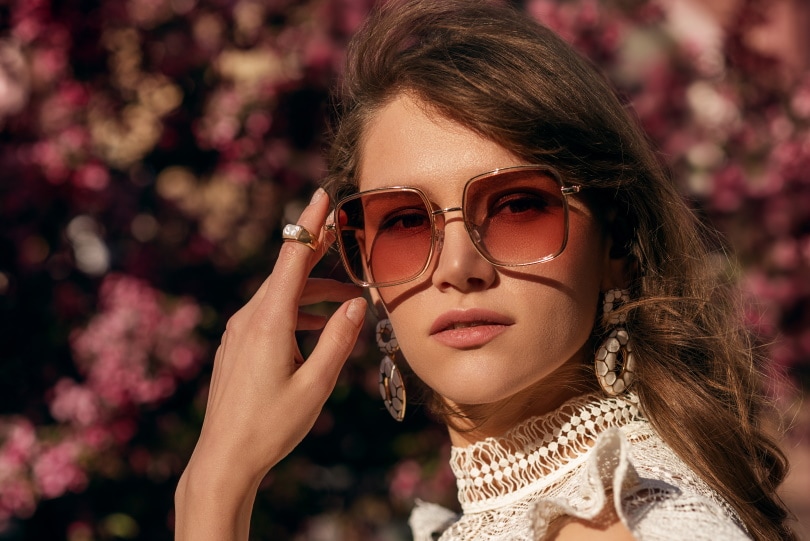
The materials used to craft square-shaped sunglasses are of a wider variety. The reason is that these glasses are usually designed to be gender-neutral. They can be worn by men or women who have different tastes and preferences. For instance, those looking to mix casual with formal.
What’s more, they’ll blend well with people who have heart-shaped faces, round, or oval. The frames can be oversized or small, and the lenses installed can be of any type. Practically anything that fits the wearer’s aesthetic style.
10. Round Sunglasses

Round pairs are meant to be worn by people who have angular faces. In the fashion industry, it’s a cardinal sin to wear a round pair of sunglasses knowing very well that your face lacks features such as the chisel-shaped chin.
Round sunglasses were trendy in the early 2000s. Celebrities from all over the world wore them because in the 90s, round-shaped prescription glasses were considered a symbol of intelligence. It was their way of letting the world know that intelligence and fashion can coexist in the same circle.
11. Aviator Sunglasses

Aviators have been around the block since 1936. They were initially designed for pilots who fly those cool fighter jets, but people quickly fell in love with how stylish they looked. They are indeed special since they have features that flatter any gender or face. If you’d wish to work with a statement piece that screams versatility, this right here is the one.

Frequently Asked Questions
What are sunglass categories?
Categories are normally equated to the Visible Light Transmission percentage. Simply put, this is the amount of light that’s allowed to pass through a particular lens. If the VTL is high, the lens will have a lighter shade. Meaning that less light is being blocked as it tries to get to the eye. In total, we have 5 categories. Category zero has no to little tint, while category 4 has the most tint.
What style is the most popular sunglass style?
The Aviator. It seems like a lot of people are buying into their sophistication and style. Or maybe they just prefer wearing something that they are most familiar with. But we’ll never know for sure.

What’s the latest sunglass trend?
It has to be neon. Instead of lighting up the room, it glows. And that’s what stylists and fashion enthusiasts love about it. The effects are never too bright but pleasant to the eye. Also, those who are environmentally conscious love how cheap and energy-efficient they are to run.

In Conclusion
It’s almost a crime to not own a pair of sunglasses in this day and age. They’ve become part and parcel of our lives, as we’ve grown to appreciate them even more. Before you invest in any pair, do your due diligence. Learn about the ‘dos and don’ts and you’ll never be caught in the crosshairs of any fashion police.
Featured Image Credit: Sefton N Brown Jnr, Shutterstock
About the Author Robert Sparks
Robert’s obsession with all things optical started early in life, when his optician father would bring home prototypes for Robert to play with. Nowadays, Robert is dedicated to helping others find the right optics for their needs. His hobbies include astronomy, astrophysics, and model building. Originally from Newark, NJ, he resides in Santa Fe, New Mexico, where the nighttime skies are filled with glittering stars.
Related Articles:
Monocular vs Telescope: Differences Explained (With Pictures)
How to Clean a Refractor Telescope: Step-by-Step Guide
How to Clean a Telescope Eyepiece: Step-by-Step Guide
How to Clean a Rifle Scope: 8 Expert Tips
What Is a Monocular Used For? 8 Common Functions
How to Clean a Telescope Mirror: 8 Expert Tips
Brightfield vs Phase Contrast Microscopy: The Differences Explained
SkyCamHD Drone Review: Pros, Cons, FAQ, & Verdict
